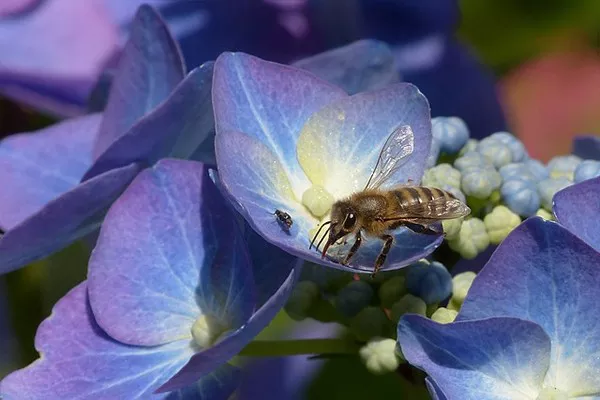Bees are essential pollinators, playing a pivotal role in the reproduction of flowering plants and the maintenance of ecosystems. However, for some individuals, encounters with bees can lead to discomfort or even fear due to allergic reactions or simply a dislike of stings. In certain situations, such as outdoor events or dining areas, minimizing bee presence might be desirable. While there are various methods to deter bees, one avenue that has been explored is the use of specific flowers. This article delves into the concept of using flowers to repel bees, examining the scientific basis behind it and exploring potential options for implementation.
Understanding Bee Behavior
Before delving into which flowers might repel bees, it’s essential to understand the behavior of these pollinators. Bees are attracted to flowers primarily by their color, scent, and nectar. They play a crucial role in pollination, transferring pollen from one flower to another as they forage for nectar. However, bees are also territorial and defensive of their food sources, particularly if they feel threatened.
The Role of Flowers in Bee Repellent Strategies
While it might seem counterintuitive to use flowers to repel bees, certain plant species emit scents or contain compounds that bees find unpleasant or confusing. By strategically planting these flowers, it’s theorized that the presence of these natural repellents can deter bees from certain areas without causing harm to the insects.
Flowers with Bee-Repelling Properties
Several flowers have been suggested as potential bee repellents, although scientific evidence supporting their efficacy is limited. One such example is the marigold (Tagetes spp.). Marigolds produce a strong, pungent scent that some believe deters bees. Similarly, mint (Mentha spp.) is another plant that is often cited as having bee-repellent properties due to its potent aroma.
Another contender is the geranium (Pelargonium spp.), which is known for its strong scent. Some individuals claim that geraniums can deter bees, although there is little scientific evidence to support this assertion. Similarly, lavender (Lavandula spp.) is believed by some to repel bees due to its strong fragrance, but again, conclusive evidence is lacking.
Scientific Evidence and Considerations
While anecdotal evidence and traditional beliefs suggest that certain flowers may repel bees, scientific studies on this topic are scarce and often inconclusive. Additionally, the effectiveness of flower-based bee repellents may vary depending on factors such as bee species, environmental conditions, and the specific floral composition of an area.
Moreover, it’s important to consider the broader ecological implications of using flowers as bee repellents. Bees play a vital role in pollination and ecosystem health, and efforts to deter them should be undertaken with caution to avoid unintended consequences.
Alternative Bee Deterrence Methods
In situations where minimizing bee presence is necessary, there are alternative methods that may be more effective and less environmentally disruptive than planting specific flowers. For example, maintaining cleanliness and minimizing food sources can reduce bee attraction to an area. Additionally, using physical barriers such as screens or nets can prevent bees from accessing certain areas without harming them.
Conclusion
While the concept of using flowers to repel bees may seem appealing, the scientific evidence supporting this approach is limited. While certain plants may emit scents or contain compounds that bees find unpleasant, their effectiveness as bee repellents remains uncertain.
Furthermore, it’s essential to consider the broader ecological implications of deterring bees, as these insects play a crucial role in pollination and ecosystem health. Instead of relying solely on flower-based repellents, alternative methods such as maintaining cleanliness and using physical barriers may be more effective and environmentally sustainable.
In conclusion, while the idea of using flowers to repel bees may have some merit, further research is needed to better understand the efficacy and potential impacts of this approach. In the meantime, it’s crucial to approach bee deterrence strategies with caution and prioritize methods that minimize harm to these important pollinators.


